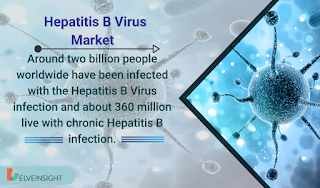Genital Warts Market: Causes, Symptoms, Diagnosis, Treatment Options, and Companies
Genital warts, medically known as condyloma acuminatum, are a common sexually transmitted infection (STI) caused by certain strains of the human papillomavirus (HPV). These warts appear as small, fleshy growths or lumps in the genital or anal regions and can significantly impact an individual’s quality of life. This article explores the causes, symptoms, diagnosis, and treatment options for genital warts, along with insights into the market landscape for related therapies.
Causes of Genital Warts
Genital warts are primarily caused by HPV, a virus with over 200 known strains. The strains most commonly associated with genital warts are HPV types 6 and 11. These strains are classified as low-risk HPV types because they are less likely to cause cancers compared to high-risk types like HPV 16 and 18.
The transmission of HPV occurs through direct skin-to-skin contact, most commonly during sexual activity. This includes vaginal, anal, and oral sex. The virus can be spread even if warts are not visible, as HPV can be transmitted from an infected person who shows no symptoms.
Symptoms of Genital Warts
Genital warts may vary in size and appearance and can be difficult to detect. Common symptoms include:
- Small, Bumpy Growths: Warts may appear as small, cauliflower-like lumps or singular smooth, flat lesions.
- Itching and Discomfort: Itching or discomfort in the genital or anal area may occur.
- Bleeding: Warts may bleed if they are irritated or scratched.
- Pain During Intercourse: Discomfort or pain during sexual activity can be a symptom if warts are present in the genital region.
Some individuals with genital warts may be asymptomatic and unaware of their infection, which can contribute to the spread of HPV.
Diagnosis of Genital Warts
Diagnosing genital warts typically involves a combination of clinical examination and diagnostic procedures:
1. Physical Examination: A healthcare provider will inspect the genital and anal areas for the presence of warts. The appearance of the warts, their location, and size can often lead to a clinical diagnosis.
2. Pap Smear: For women, a Pap smear may be performed to detect abnormal cells in the cervix that could be related to HPV infection. This test is primarily used for cervical cancer screening but can provide indirect evidence of HPV infection.
3. HPV Testing: HPV DNA tests can identify the presence of high-risk HPV types. While not typically used for diagnosing genital warts, these tests can be useful for assessing the risk of cervical or other cancers associated with HPV.
4. Biopsy: In cases where the diagnosis is uncertain, a biopsy may be performed. This involves removing a small sample of the wart tissue for laboratory analysis.
Request for a sample report @ https://www.delveinsight.com/sample-request/genital-warts-condyloma-acuminatum-market
Treatment Options for Genital Warts
While there is no cure for HPV infection, several treatment options can help manage genital warts and alleviate symptoms:
1. Topical Treatments: Various topical treatments can be applied directly to the warts:
- Imiquimod: An immune response modifier that helps the body’s immune system to fight the warts.
- Podofilox: A cytotoxic agent that destroys wart tissue.
- Sinecatechins: A plant-derived treatment that has antiviral properties.
2. Cryotherapy: This involves freezing the warts with liquid nitrogen. The extreme cold destroys the wart tissue, causing it to fall off over time.
3. Electrosurgery: An electric current is used to burn off the warts. This method is effective but may cause discomfort and require local anesthesia.
4. Laser Treatment: A laser can be used to target and destroy wart tissue, especially in cases of extensive or resistant warts.
5. Surgical Removal: In some cases, warts may be removed surgically. This option is typically reserved for large or persistent warts.
6. Interferon Therapy: This treatment uses interferon, a protein that helps the immune system to fight off the warts. It is generally used for difficult cases.
It is important to consult a healthcare provider to determine the most appropriate treatment based on the size, location, and number of warts, as well as the patient’s overall health and preferences.
Market Overview for Genital Warts Therapies
The market for genital warts treatments is evolving, with several companies contributing to the development and availability of effective therapies. Key players in the market include:
1. GlaxoSmithKline (GSK): Known for its development of the HPV vaccine, GSK plays a significant role in the prevention of HPV infections, which can lead to genital warts. The vaccine, such as Cervarix and Gardasil, targets multiple HPV strains and helps in reducing the incidence of genital warts and associated cancers.
2. Merck & Co., Inc.: Merck offers the Gardasil vaccine, which protects against several strains of HPV, including those responsible for genital warts. The company is actively involved in research and development to improve HPV prevention and treatment options.
3. Bristol-Myers Squibb: This company provides treatments and therapies related to viral infections, including those targeting HPV and its complications.
4. Mylan N.V.: Mylan is known for its work in the pharmaceutical field and has been involved in providing affordable treatment options for various conditions, including those related to HPV.
5. Sanofi: Sanofi is engaged in developing vaccines and therapies that address viral infections, contributing to the prevention and management of HPV-related conditions.
6. Allergan: Allergan offers topical treatments for various skin conditions, including those related to HPV infections. Their products contribute to managing symptoms of genital warts.
Genital warts, caused by HPV, are a prevalent STI with significant implications for affected individuals. Understanding the causes, symptoms, and available treatments is crucial for effective management and prevention. With ongoing advancements in medical treatments and vaccines, the landscape for managing and preventing genital warts continues to improve. Companies are playing a vital role in this progress, offering innovative solutions to address this common and impactful condition.
Download latest report @ https://www.delveinsight.com/sample-request/genital-warts-condyloma-acuminatum-market

Comments
Post a Comment